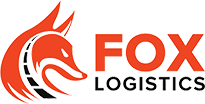



The team at Fox Logistics is passionate about decreasing the carbon footprint with a commitment to be carbon neutral by 2025. That said, freight services ARE carbon-intensive, particularly expedited freight, where the top priority is to get cargo delivered as quickly as possible, making as few stops as possible between point A and point B. Working with an asset-based third-party logistics provider like Fox will allow you to source and ship as efficiently and responsibly as possible with increased visibility and transparency.
Responsibly expediting shipping means working with as many different networks and carrier connections as possible. Fox and other 3PLs can find opportunities within their networks that work for both shippers and carriers, combining purchasing power to negotiate better rates or finding space on large trucks or small sprinter vans. Access to multiple options speeds up transport times while reducing overall shipping pricing.
The dedicated box trucks or sprinter vans for expedited shipping put a lot of carbon into the atmosphere. Shared transportation or truckload (STL) allows shippers to share space in one multi-stop full truckload where freight travels directly from the pickup location to the end destination. Putting more freight on a truck means less carbon per pound of cargo going into the atmosphere. Unfortunately, many manual processes in the logistics industry make shipping this way extremely complex.
Making operational changes that increase the flow of information are key to success. Using automation to help with tasks like scanning emails and PDFs allows organizations to spend more time on proper route building than manual tasks. Automation platforms can also provide shippers with the ability to consolidate and track orders in real-time and help carriers better manage complex shipments. For example, if a shipper has three customers that have filled a trailer three-quarters of the way, they don’t want to wait for a fourth customer to ship. Still, shipping with a trailer partially empty is bad for the environment and potentially bad for the bottom line. Automation complements the fundamental infrastructure already in place by providing real-time visibility into the supply chain and speeding up the flow of information.
In a volatile industry marked by constant delays, unethical brokers, and unpredictable rate changes, the idea of transparency is much easier said than done. That said, the only way we can ship responsibly is when all partners in the supply chain share information. By sharing information from transportation management systems or enterprise resource planning tools, shippers and carriers can build better routes, plan for future shipments, and provide a better timeline for when certain products will arrive.
With this kind of transparency, in the future, organizations could see everything from how much space is available in a trailer, the location of their partial shipments, and even as granular as how fast the truck is moving on the highway, if it’s stopped and how that might impact delivery time. This will allow us to build the most efficient shared transportation loads and routes.
Fox Logistics has more than two decades of experience in the logistics industry, helping customers protect their bottom lines with fast communication, on-time delivery, and phenomenal customer service across the entire shipment lifecycle. Contact us today to help build a more efficient plan for your expedited shipping.